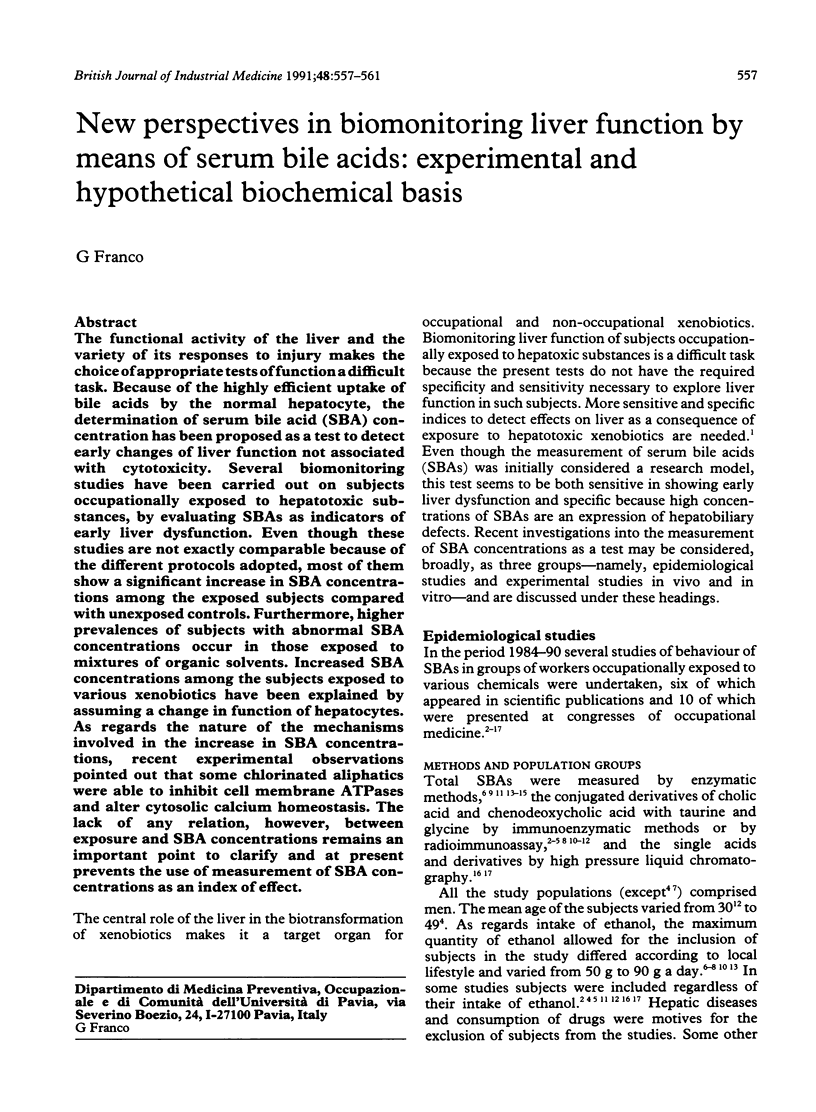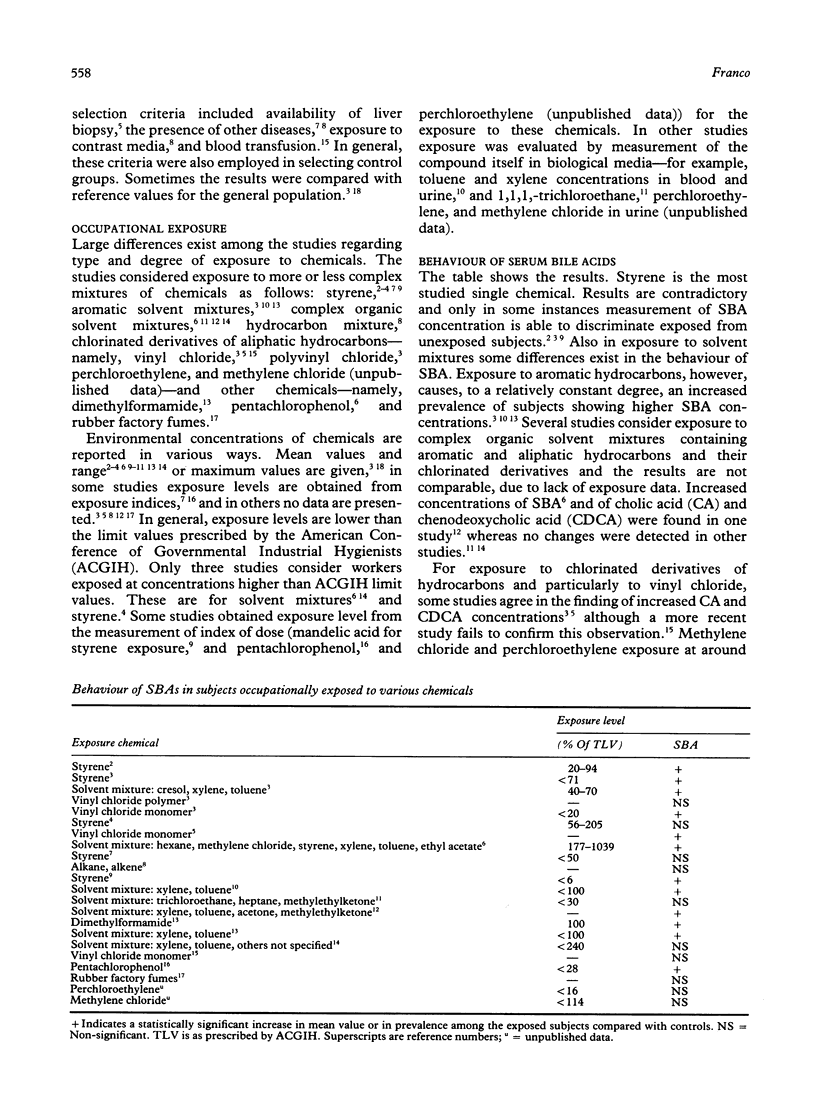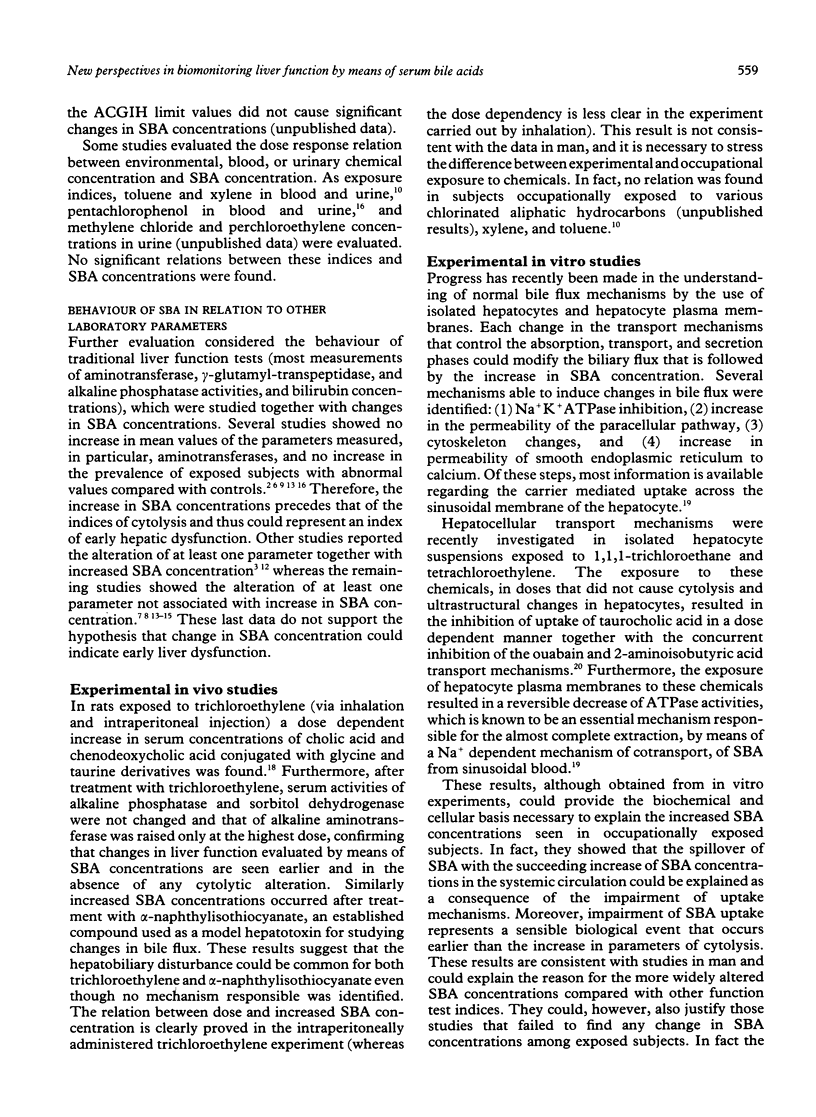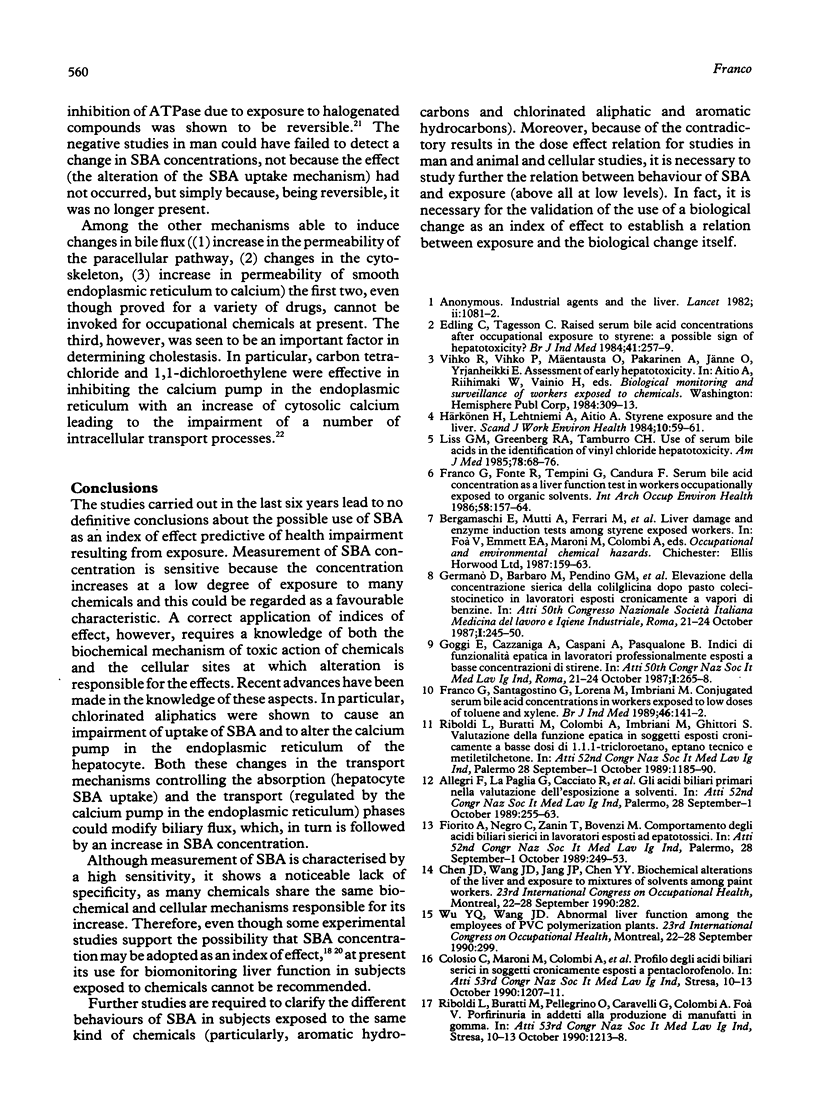Abstract
The functional activity of the liver and the variety of its responses to injury makes the choice of appropriate tests of function a difficult task. Because of the highly efficient uptake of bile acids by the normal hepatocyte, the determination of serum bile acid (SBA) concentration has been proposed as a test to detect early changes of liver function not associated with cytotoxicity. Several biomonitoring studies have been carried out on subjects occupationally exposed to hepatotoxic substances, by evaluating SBAs as indicators of early liver dysfunction. Even though these studies are not exactly comparable because of the different protocols adopted, most of them show a significant increase in SBA concentrations among the exposed subjects compared with unexposed controls. Furthermore, higher prevalences of subjects with abnormal SBA concentrations occur in those exposed to mixtures of organic solvents. Increased SBA concentrations among the subjects exposed to various xenobiotics have been explained by assuming a change in function of hepatocytes. As regards the nature of the mechanisms involved in the increase in SBA concentrations, recent experimental observations pointed out that some chlorinated aliphatics were able to inhibit cell membrane ATPases and alter cytosolic calcium homeostasis. The lack of any relation, however, between exposure and SBA concentrations remains an important point to clarify and at present prevents the use of measurement of SBA concentrations as an index of effect.
Full text
PDF




Selected References
These references are in PubMed. This may not be the complete list of references from this article.
- Edling C., Tagesson C. Raised serum bile acid concentrations after occupational exposure to styrene: a possible sign of hepatotoxicity? Br J Ind Med. 1984 May;41(2):257–259. doi: 10.1136/oem.41.2.257. [DOI] [PMC free article] [PubMed] [Google Scholar]
- Franco G., Fonte R., Tempini G., Candura F. Serum bile acid concentrations as a liver function test in workers occupationally exposed to organic solvents. Int Arch Occup Environ Health. 1986;58(2):157–164. doi: 10.1007/BF00380767. [DOI] [PubMed] [Google Scholar]
- Franco G., Santagostino G., Lorena M., Imbriani M. Conjugated serum bile acid concentrations in workers exposed to low doses of toluene and xylene. Br J Ind Med. 1989 Feb;46(2):141–142. doi: 10.1136/oem.46.2.141. [DOI] [PMC free article] [PubMed] [Google Scholar]
- Härkönen H., Lehtniemi A., Aitio A. Styrene exposure and the liver. Scand J Work Environ Health. 1984 Feb;10(1):59–61. doi: 10.5271/sjweh.2369. [DOI] [PubMed] [Google Scholar]
- Kukongviriyapan V., Kukongviriyapan U., Stacey N. H. Interference with hepatocellular substrate uptake by 1,1,1-trichloroethane and tetrachloroethylene. Toxicol Appl Pharmacol. 1990 Jan;102(1):80–90. doi: 10.1016/0041-008x(90)90085-9. [DOI] [PubMed] [Google Scholar]
- Liss G. M., Greenberg R. A., Tamburro C. H. Use of serum bile acids in the identification of vinyl chloride hepatotoxicity. Am J Med. 1985 Jan;78(1):68–76. doi: 10.1016/0002-9343(85)90464-4. [DOI] [PubMed] [Google Scholar]
- Moore L., Schoenberg D. R., Long R. M. Impact of halogenated compounds on calcium homeostasis in hepatocytes. Environ Health Perspect. 1990 Mar;84:149–153. doi: 10.1289/ehp.9084149. [DOI] [PMC free article] [PubMed] [Google Scholar]
- Wang G. F., Stacey N. H. Elevation of individual serum bile acids on exposure to trichloroethylene or alpha-naphthylisothiocyanate. Toxicol Appl Pharmacol. 1990 Sep 1;105(2):209–215. doi: 10.1016/0041-008x(90)90182-t. [DOI] [PubMed] [Google Scholar]


